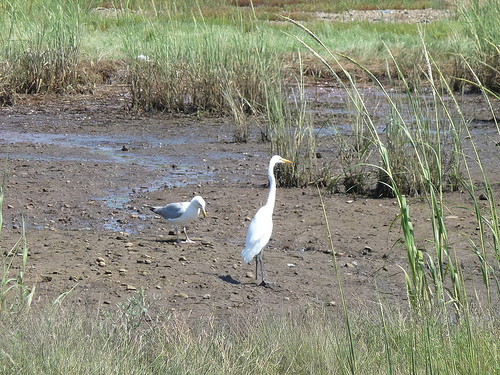 The Comprehensive Environmental Response, Compensation and Liability Act (CERCLA) of 1980 and subsequent amendments outline federal response options for the remediation of pollutants, contaminants and hazardous substances, via the US Environmental Protection Agency (EPA) Superfund site program. Sites become eligible for the Superfund program after being placed on the National Priorities List (NPL).
The Comprehensive Environmental Response, Compensation and Liability Act (CERCLA) of 1980 and subsequent amendments outline federal response options for the remediation of pollutants, contaminants and hazardous substances, via the US Environmental Protection Agency (EPA) Superfund site program. Sites become eligible for the Superfund program after being placed on the National Priorities List (NPL).
Getting on the NPL.
The EPA Superfund NPL process follows a series of science-based steps to determine the extent of contamination at a given site and the current or potential level of threat to human and/or environmental health.
Sites can be listed on the NPL in three ways:
- The Hazard Ranking System (HRS).
- Each state or territory can assign one top-priority site with any HRS ranking.
- The US Department of Public Health Service Agency for Toxic Substances and Disease Registry and the EPA can formally agree that the site poses a significant public health threat and that using the EPA’s remedial authority represents the most expedient response.
The HRS is the primary tool and follows these steps:
- A limited site inspection is conducted to assess potential threats from migration of groundwater, surface water or air or direct contact.
- The site is ranked numerically based on actual or potential threat level. Sites with scores of at least 28.5 on a scale of 1-100 are eligible for listing, depending on further risk assessment.
- Eligible sites also undergo public comment before being officially listed as EPA Superfund sites.
- Placement on the NPL triggers a formal remedial process, including more in-depth site investigation and a feasibility study to further evaluate site conditions, define response alternatives and create a cleanup plan.
- Work begins after the selected remedy is noted in the official Record of Decision. Upon completion, the State or potentially responsible parties (PRPs) may remain responsible for any ongoing remedial activities or monitoring.
- EPA deletes the site from the list when cleanup goals are attained.
There is also a “non-time-critical” contamination removal process designed to move some sites faster through the Superfund process. This is a significantly less costly approach to assessment and cleanup.
Site owners or PRPs should protect their interests by participating in the EPA Superfund sites process, especially regarding remediation-related site operations and costs. An experienced engineering consultant can help you navigate this process using their scientific expertise and detailed understanding of the Superfund process.
